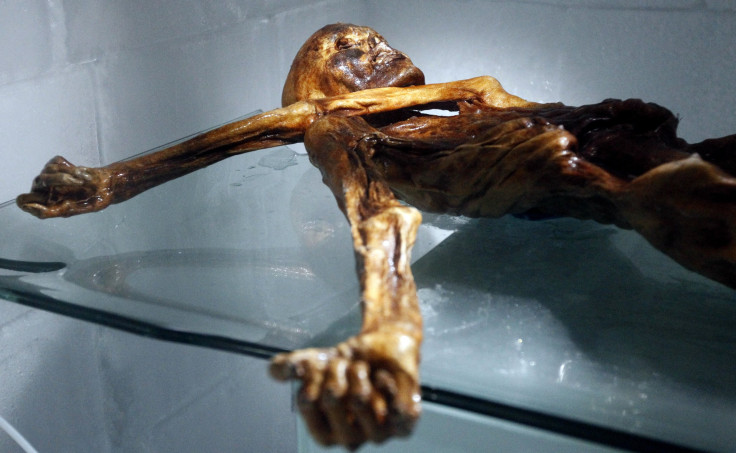Otzi The Iceman Facts: Age, History Of Oldest European Mummy As 3-D Print Revealed [VIDEO]

A museum in northern Italy revealed this week several 3D-prints of 5,000 year-old natural mummy nicknamed “Otzi the Iceman.” A pair of hikers in 1991 discovered Otzi, naturally preserved in ice in the Otzal Alps, and now a 3-D print of this ancient human is preparing for its first world tour.
Otzi is from the Copper Age, and discovery of his preserved body has allowed scientists to learn valuable information about the culture, customs and living habits of humans from that era. Despite having been dead for more than 5,000 years, immediate freezing of his corpse in the cold conditions allowed scientists to discover his body still intact, along with a backpack and axe. As his corpse was discovered in the Alps between Austria and Italy, the two countries initially argued over where he would be housed. After authorities determined his body had been within 92 meters, or approximately 100 yards of the Italian border, a special chamber was created to house him in Tyrol, Italy.
Scientists used CT scans of his body in the creation of the 3-D prints, along with help from U.S. artist Gary Staab, who assisted in sculpting and painting the replicas. "The reconstruction of the hands was a challenge, since they could not be captured on CT scans," said the museum in Italy where Otzi is currently housed.
Three 3-D prints were created in all, with one going to North America to start a traveling exhibition and two others being used as teaching tools at Cold Spring Harbor DNA Learning Center in New York (DNALC).
The ancient man, who died mysteriously from an arrow wound between the age of 40 and 50, was covered in at least 60 tattoos, many of which corresponded to acupuncture pressure points for his arthritis. DNA testing of his gut microbes revealed he was lactose intolerant.
The contents of his stomach were still preserved and even his organs remained some of their elasticity – something unheard of in Egyptian and Peruvian mummies, for instance, where the embalming process dehydrated the corpses.
© Copyright IBTimes 2024. All rights reserved.





















